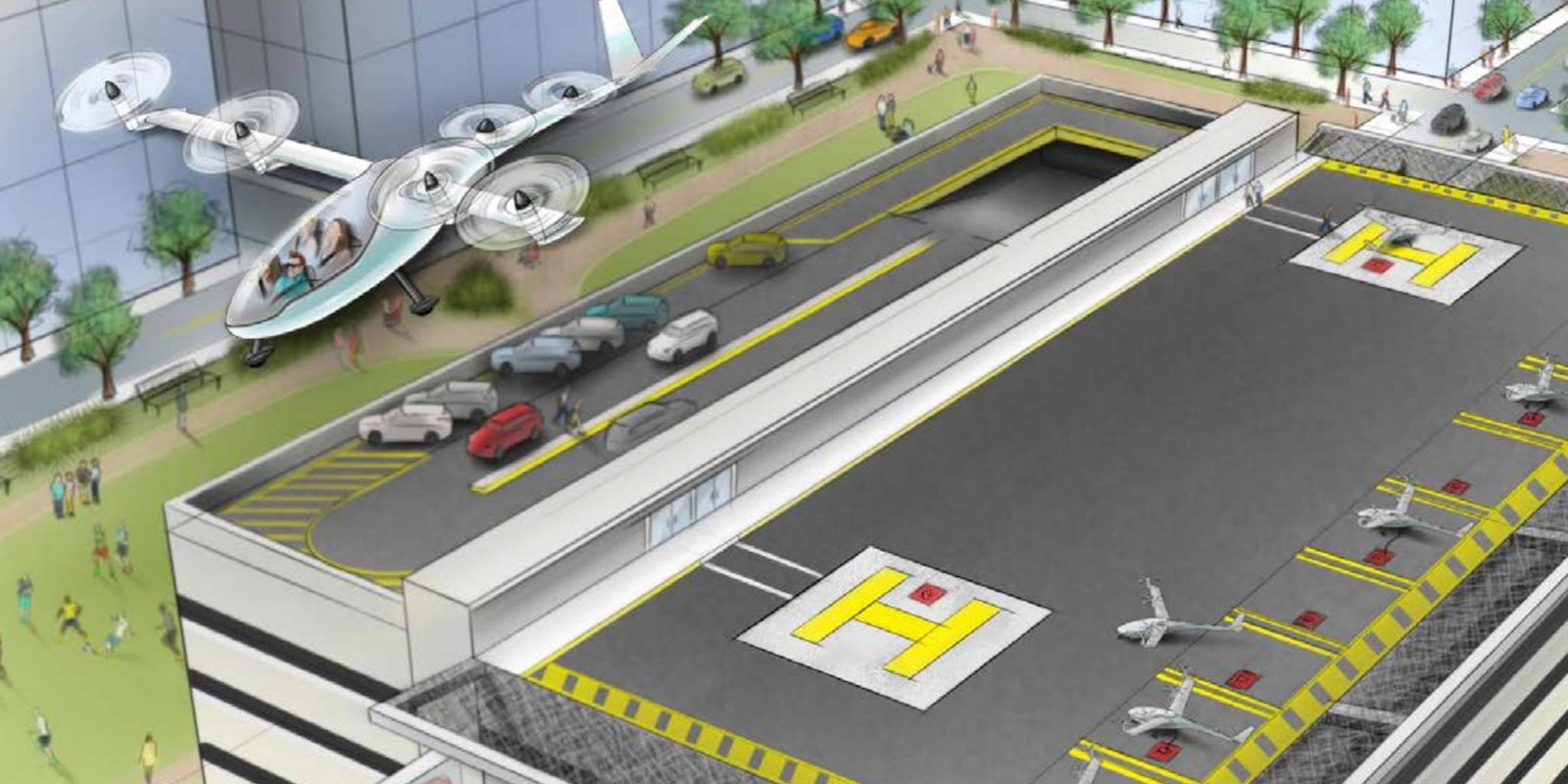If you’ve ever hurriedly wanted an Uber driver to fly you across town, that may soon be a literal and feasible request.
Uber hired veteran NASA engineer Mark Moore this month to work on its Uber Elevate project, which focuses on flying vehicles. In 2011 Moore published a white paper over VTOL (vertical take-off and landing) vehicles, and worked with NASA for 30 years on putting electric motors in flying vehicles. To be blunt, the guy’s a pro.
Moore’s white paper also heavily influenced Google co-founder Larry Page’s decision to fund flying car startups in 2016. Now that Moore is working for a Google rival, the competition just might bring more flying vehicles to the stage soon.
Uber announced its Uber Elevate initiative in October, but hasn’t released any information since. The company’s white paper outlined goals to focus on noise pollution, efficiency, and the short lives of electric batteries. This new hire is an attempt to keep the project going and eventually come into fruition.
“We’re excited to have Mark join us to work with companies and stakeholders as we continue to explore the use case described in our white paper,” Nikhil Goel, Uber’s head of product for advanced programs, told TechCrunch.
In a hefty vision, Moore predicts we’ll see well-engineered flying cars within the next few years. This, however, isn’t a new prediction in the tech world. It’s likewise never been actualized.
Though the company isn’t looking to produce any vehicles or aircrafts of its own, it still strives to be a “catalyst” in the transportation technology world to push for these advancements to be made.
The company’s endeavors for self-driving cars haven’t seemed to advance much, though. In a battle with the California DMV, Uber had to pull out all of its test vehicles for the project and hasn’t tried in a different state as of yet.
This announcement closely follows mass Uber rider exodus #DeleteUber, a campaign protesting Uber breaking the New York City-wide taxicab strike amid President Trump’s travel ban.


